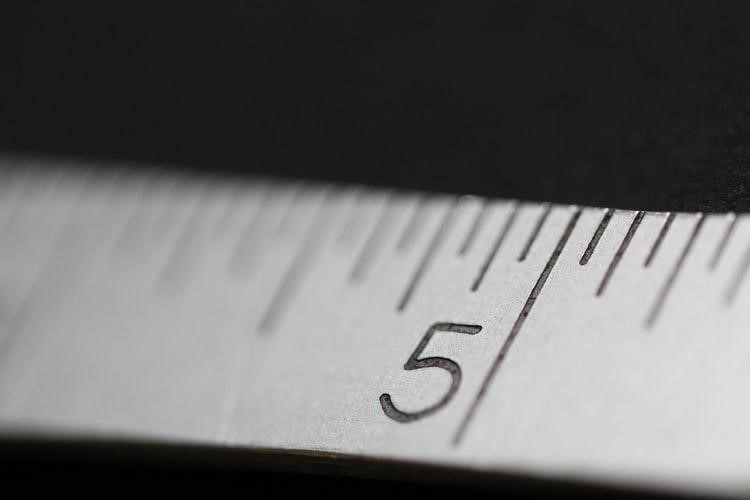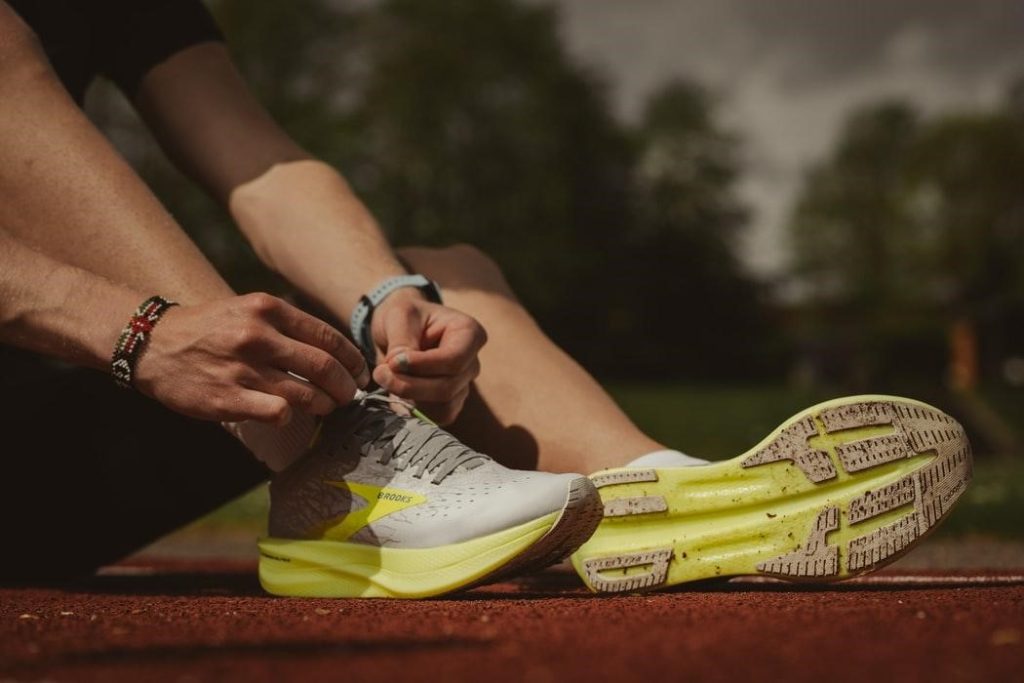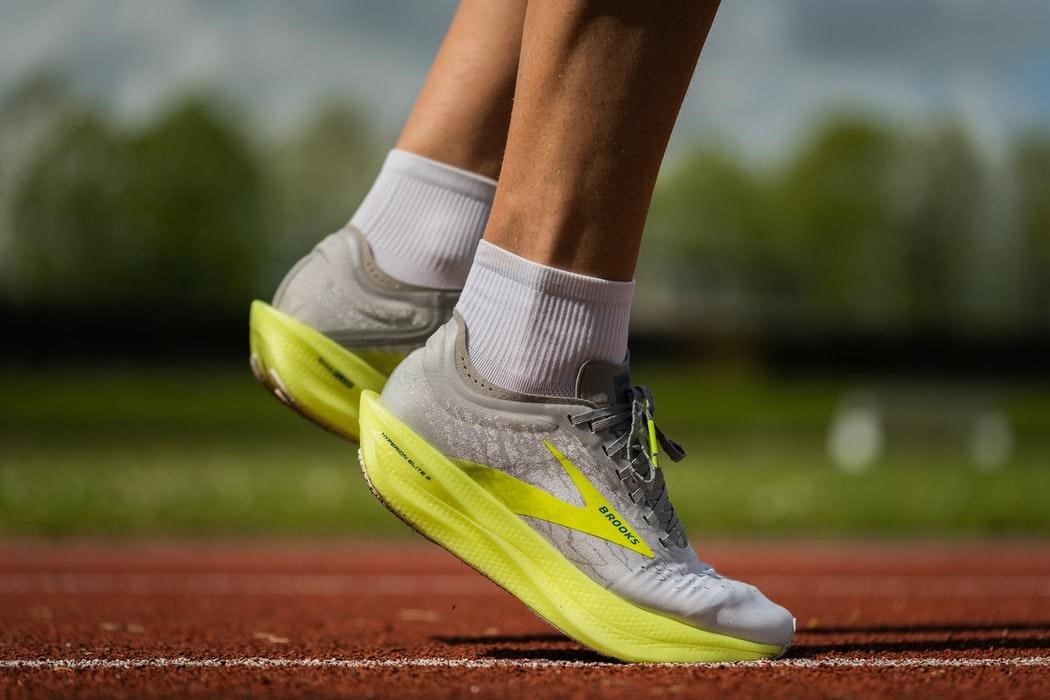Last Updated on October 25, 2022 by admin
Choosing running shoes can be confusing and overwhelming. Today, there is a lot of variety in the sports shoe market. The task of choosing good running shoes can be made easier if we know the appropriate characteristics that they should have. Bearing in mind that we only have limited time to choose a new athletic shoe, we should have all the correct information to answer the question: how should running shoes fit.
Choosing proper running shoes is important even for beginners. However, if you are going to begin to enter the world of “running,” you may have to start walking, for which you do not need specialized footwear. Just make sure it is comfortable and adequately cushions your footprint.
Running is a high-impact sport; the feet must have a soft cushioning and shock absorption. If you don’t choose the right shoe, you can injure yourself while running.
How Should Running Shoes Fit?
If you have doubts about how your running shoes should fit, here we explain how they should fit on each part of your feet.
Heel Adjustment
When trying on different running shoes, check that they fit snugly at the heel but not too tight. To check, try sliding your foot out while the shoelaces are untied. If you can do it easily, it’s the right fit. When the shoelaces are tied, you should be able to move your heel but not too much.
Instep Adjustment
A running shoe should fit correctly on the peak of your foot, right in the middle. In addition, you should not perceive any type of abrasion or discomfort on your instep. If you find the perfect athletic shoes but feel pressure under the laces, try loosening the laces before changing shoe styles or models.
Fit to the Width of the Foot
You should be able to move your foot from side to side without pushing past the sole of the running shoe. If you feel the little toe of your foot on the last bit of the shoe, it means that it is too tight.
Fit Along the Sides of the Foot
When you run, your feet change shape and size due to movement and impact. Make sure that when choosing the right running shoe, there is a space between your thumb and the end of the running shoe.
Flexion
It is extremely important that your feet can take the smoothest path to the ground. To check that your new running shoes allow for this, lift the ball of your foot by resting your heel on the ground. Slowly simulate the path your foot takes when walking or running by stepping from heel to toe. The shoe should bend and adapt at the same time to the movement of your foot.
How to Measure Your Feet to Choose the Correct Shoe Size

For a proper fit, you need to know the correct shoe size you need. Knowing this, you will have a better chance of choosing a running shoe that fits you correctly.
If you want to know the size of shoes to buy, follow these simple steps to measure your feet. We recommend doing it in the afternoon or at night so that your foot has reached the maximum size it may have during the day.
- Place a sheet of paper on the floor, next to the wall
- Place your foot on the sheet of paper. We recommend doing it with socks. Preferably the ones you use regularly to go running
- Mark a line on the sheet of paper where your longest finger reaches. It can be the thumb or even any other finger. It depends on each person
- Using a ruler, measure the distance between the wall and the mark you made on the sheet of paper in centimeters
- Add 0.5 cm so that the shoe is a little too big for you to compensate for the expansion of your foot
- Do the same with the other foot
Now that you know your foot measurement in centimeters, just check the size charts for each footwear brand you want to buy. Remember that each brand has different parameters, and your size can change from one brand to another. Some sports shoe brands already label sneakers with the measurement in centimeters.
Tips for Finding a Good Fit for Your Running Shoes
- Measure your feet year after year. Feet often change in size as one ages. Over time, the arch of the foot sinks. As this happens, your foot gets longer. Or else, the arch of the foot can become much more pronounced, resulting in a shorter foot size. Gaining or losing weight and can also influence the size of your feet.
- Choose your running shoes about a ½ size larger than your casual shoes. Running in a slightly larger shoe prevents injury to your feet.
- Consider the difference in size between your left foot and your right foot. When you go to the sports store and measure your running shoes, be sure to try them on your longest and widest foot. This will prevent one of your running shoes from being too small. If this happens, you may have discomfort or injury while running.
- Consider running speed. If you are a runner who is used to going at a higher speed, choose a tighter shoe. A snug fit will help ensure that when you pick up your running pace, your running shoes are well attached to your feet.
- Try on your running shoes with socks. When choosing your running shoes, be sure to wear the socks that you will use for running. The thickness of your sock can drastically change the shoe size you require. A thinner sock will leave more space between the shoe and your feet than a thicker sock.
Mistakes You Should Avoid to Get the Right Shoe Fit
- Don’t buy sneakers only for their design or for fashion reasons. When we are about to buy a new shoe, our first reaction is to look at its design and colors. And many times, it ends up being the main purchase factor without delving into its characteristics. Instead, you should always do your research and ask the seller what type of runner, terrain, and type of wear pattern and tread the shoes you are trying on are designed for.
- Don’t take your shoe size for granted and buy tennis shoes without measuring yourself. Shoe sizes change with each brand and model. Some models have a narrower profile, and others are wider. We recommend that you always try on tennis shoes before buying them and check how each model or brand fits in different sizes. If you choose a sports shoe in the wrong size, you could risk problems such as blisters, calluses, or even a black nail and instability when doing physical activity such as running. Remember that running shoes should ideally fit about a ½ size larger than normal so that your toes can move inside the shoe.
- Don’t only look to get a good deal on the price. When it comes to buying an item, we are all interested in saving money. However, if you use the price as the main driver for your purchase without looking at the shoe’s characteristics, you can cause an injury when running. Or, you may be sacrificing quality and having your running shoes last much less time. It is always possible to find brands or models with prices that fit your needs and budget without compromising quality.
- Don’t buy at the wrong time. Normally, when our physical activity is less in the mornings, our feet tend to be narrower and shorter. However, when running, we notice our footwear gets tighter; this causes us some inconvenience and sometimes foot pain. For this reason, it is worth mentioning that the best time of day to go to try on that running shoe model that you liked so much is after 4 pm. It is after this time that our feet are most swollen. Therefore, you can ensure that you will not have any discomfort when you finish running and your feet are a little more swollen.
- Buying without taking into account our physique or type of training. Each shoe is different and has ideal characteristics according to our weight or the type of training or terrain in which we are going to run. Although finding the ideal shoe takes a little time, try to acquire a model that suits the type of training. Also, look for these shoes according to your weight, since the footprint is different from a 65 kg person to an 85 kg person.
- Don’t buy without knowing your footprint. Perhaps this is the most common and biggest mistake for runners. Before you buy a new running shoe, you should do a tread test. This will help make your search easier and avoid injuries that will not allow you to run for several days.

What Are Some of the Consequences of Wearing Shoes That Are Too Loose or Too Tight?
There must be a balance like everything in life, and when buying running shoes, this is not an exception.
Wearing Very Tight Running Shoes
If we buy some running shoes that are too tight, certain unwanted conditions can appear. Some of those include black nails, blisters, or your feet may feel numb during your workout. At first glance, it doesn’t seem like a big problem, but in the long run, this can have consequences that make it painful to run or just to do your daily activities.
Wearing Very Loose Running Shoes
Just like wearing running shoes that are too tight, wearing them too loose can also have consequences. It is often thought that very loose shoes can be more comfortable and can last longer running. However, in the case of running shoes, this can be very dangerous, as we could trip and fall.
Very large sports shoes can also cause blisters or chafing since the excessive movement of our feet inside the shoe will hurt over time. Another consequence of buying shoes that are too loose is that it can make our shoes last much less. By not having a movement adapted to our feet, the material can wrinkle or get hurt more easily. When we try on new running shoes, we must tie the laces well, stand up, and ensure that there is not too much space between the shoe and our toes. 0.5 cm is enough.
Extra Recommendations
Sometimes when we go to the stores to buy, the sellers are not fully trained or informed about the special characteristics of running shoes. In most cases, they only make recommendations to sell and earn their commission. And once you start using your new footwear, you realize that it was not what you were looking for.
We recommend that you do a previous search of several models and brands on the internet. Investigate its features, pros, and cons in depth. There is a lot of information about products online that you can use to your advantage. This will save you time when going to the store to buy and will prevent you from being disappointed in the product you purchased.
Conclusion
When doing physical activity, what we must prioritize the most is our physical health. Avoiding injuries or health issues is possible with prevention. Having the right equipment for running or doing any type of sport is essential to avoid these types of problems. It is important to remember that good running posture will complement your confidence in this or any other sport. Our body is wonderful and does incredible things.
However, a bad move coupled with inadequate equipment can have consequences that limit you physically. Also, remember to always consult a specialist doctor to know your state of health in depth. Each body is different and has different needs. The better you know your body, the more successful your choice of footwear or any other sports equipment will be.

